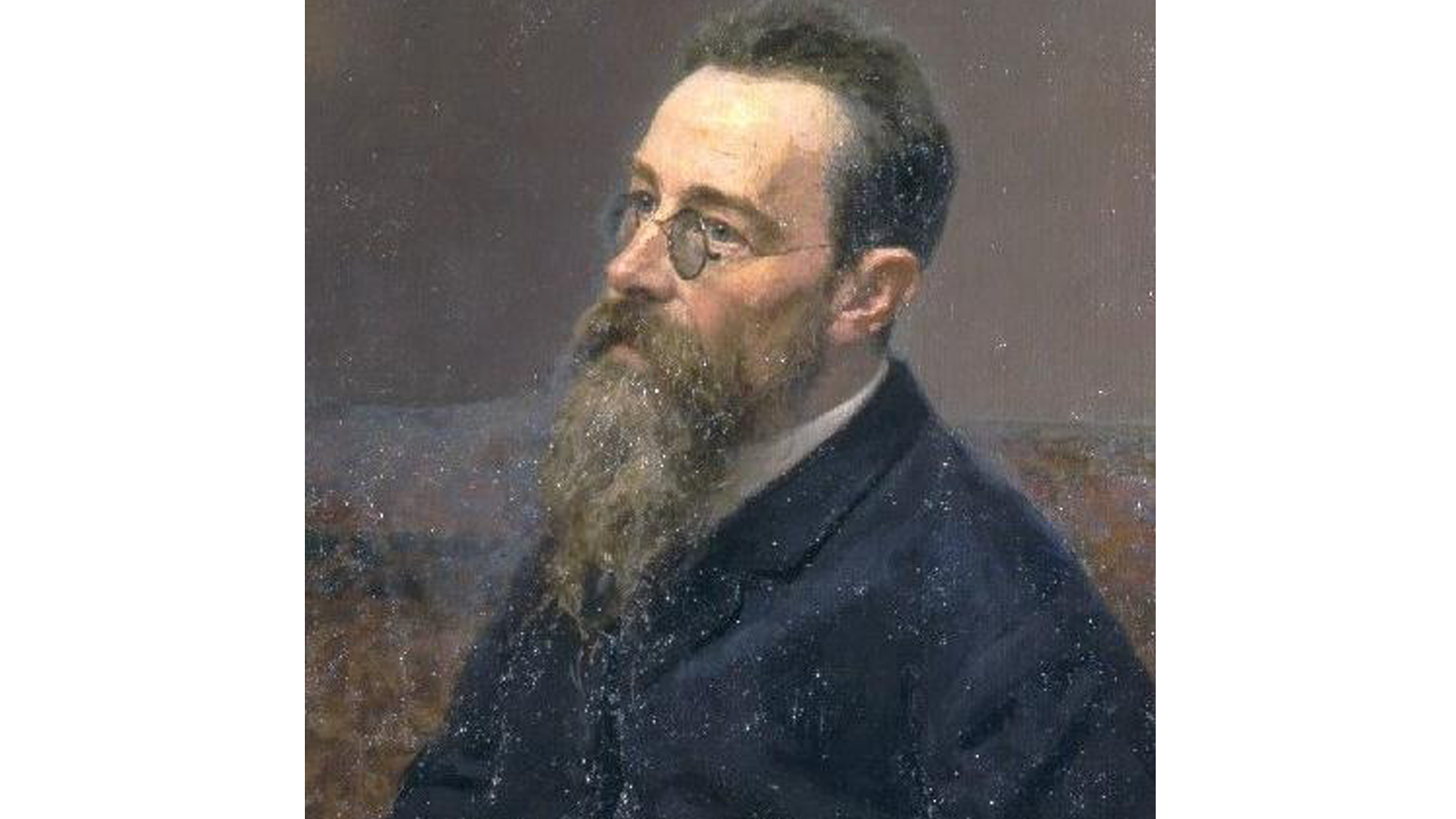
No. 17
Rimsky Korsakov: Scheherazade

As a young naval officer, a midshipman really, Nicolai Rimsky-Korsakov found himself with some time on his hands. His ship, the Almaz, was docked in New York harbor. This was in 1863 while, during the Civil War, negotiations were going on concerning the purchase of Alaska. Instead of finding his way to the seamier sections of the city known to sailors of every nation, young Nikolai boarded a train and headed up the Hudson. His destination was Niagara Falls. All his life, he loved to tell others of the sights and sounds he witnessed at the Falls. And many years later, it was he who encouraged Tchaikovsky to get to America. Even more important was his sympathy for the Union Cause. His visit to the States helped to fashion his liberal views that would set him apart from most of his Russian contemporaries for the rest of his life..
Encouraged by Mily Balakirev, the young naval officer became increasingly involved in writing music. Rimsky-Korsakov became part of a group of composers, all self-taught, who espoused a kind of musical nationalism. They were dedicated to writing Russian music. They included Balakirev, Cui, Borodin and Mussorgsky; all of whom lived and worked in St. Petersburg. Rimsky-Korsakov was the youngest among the group of “The Five”, and he was encouraged to take on a position at the St. Petersburg Conservatory teaching composition. Balakirev and the others hoped from his academic position he could encourage the pupils at the Conservatory to dedicate themselves to “Russian” music. It didn’t work out that way. In order to teach composing, Rimsky Korsakov had to immerse himself in the established disciplines of musical composition: Harmony, Counterpoint, Modes and Orchestration. In other words he had to become a teacher of and a practitioner of an academic, international style of music. In the process he became one of the world’s best orchestrators.
So for a while, Rimsky-Korsakov was somewhat estranged from his colleagues. In the 1880s he undertook two editorial assignments that helped him to return to an aesthetic based less on international standards of composition and more on melodic and harmonic procedures derived from folk music. Rimsky Korsakov undertook the editing for publication of all Mikhail Glinka’s compositions, and, at the same time, he began an anthology of Russian Folk Songs drawn from transcriptions of songs sung by unlettered folk singers.
Scherherazade, a “symphonic suite”, written in the summer of 1888 marks the synthesis of Rimsky Korsakov’s study of international methods of composition and his enthusiasm for folk based melody and harmony. For the program handed to the audience at the premier, Rimsky Korsakov wrote: “The Sultan Schariar, convinced that all women are false and faithless, vowed to put to death each of his wives after the first nuptial night. But the Sultana Scheherazade saved her life by entertaining her lord with fascinating tales, told seriatim, for a thousand and one nights. The Sultan, consumed with curiosity, postponed from day to day the execution of his wife, and finally repudiated his bloody vow entirely.” The composer first wanted to name each of the four movements, Prelude, Ballade, Adagio and Finale, but was convinced by others that the music demanded a little more. So each movement got a suggestive title: “The Sea and Sinbad’s Ship”; “The Kalendar Prince”; “The Young Prince and the Young Princess” and “Festival at Baghdad – the Sea – the Ship breaks against a Cliff surmounted by a Bronze Horseman”. After a few years, Rimsky-Korsakov lamented using the titles, writing: “All I desired was that the hearer, if he liked my piece as symphonic music, should carry away the impression that it is beyond a doubt an Oriental narrative of some numerous and varied fairy-tale wonders and not merely four pieces played one after the other and composed on the basis of themes common to all the four movements.” He wrote this in reaction to the ballet created from his Scheherazade choreographed by Michel Fokine for Diaghilev’s Ballet russe and danced with a palpable erotic charge by a gold painted Nijinsky and a bejeweled Ida Rubinstein.
Top 40 Countdown
A few years ago the listeners to WNED Classical told us what they thought a TOP 40 list of Classical pieces should be. Six hundred and twenty-two different pieces were put forward, and over nine hundred listeners participated. The result, The WNED Classical Top 40, was both startling and comforting. There were a number of surprises, Stravinsky and Copland made the list; Mendelssohn and Schumann did not! It was comforting to know that the two most popular composers were Beethoven and J.S. Bach. The biggest surprise of all was the piece that crowned the list as No. 1.